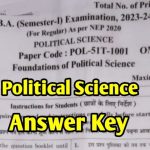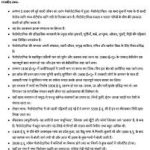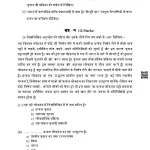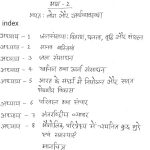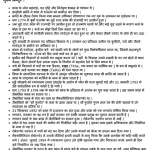This article covers all the essential aspects of Class 10 Science Chapter 2 in a very simple and easy-to-understand English language. We will provide you with comprehensive study material, which includes lecture notes, study guides, textbook summaries, flashcards, class handouts, research notes, annotated readings, homework solutions, exam preparation materials, lab reports, mind maps, practice quizzes, sample problems with solutions, and glossaries or vocabulary lists.
Lecture Notes
In this section, we will explain the key concepts of Chapter 2 in detail. The chapter focuses on the topics of chemical reactions and equations. You will learn about the different types of chemical reactions, including combination reactions, decomposition reactions, displacement reactions, and double displacement reactions. Understanding how chemical reactions occur and how they are represented using chemical equations is crucial in this chapter. The concept of balancing chemical equations will also be discussed, along with the importance of conserving mass during chemical reactions.
Study Guides
A study guide helps you organize your learning and stay on track. For Chapter 2, make sure you have a strong understanding of the various types of reactions and how to balance chemical equations. Here are a few key points from the study guide:
- Understand the difference between exothermic and endothermic reactions.
- Learn how to identify oxidation and reduction reactions.
- Practice balancing chemical equations to make sure both sides are equal.
- Review the common examples of chemical reactions found in everyday life.
Textbook Summaries
Chapter 2 of your science textbook focuses on the basics of chemical reactions. It explains how substances react to form new substances and how chemical reactions are represented by chemical equations. You will also learn about the law of conservation of mass, which states that mass is neither created nor destroyed during a chemical reaction.
In addition, the chapter includes examples of chemical reactions that occur in nature, such as rusting of iron, combustion, and respiration. The importance of balancing chemical equations and the role of energy in chemical reactions are also covered.
Flashcards
Flashcards are an excellent way to review important concepts and terms quickly. Here are some flashcard ideas for Chapter 2:
- Chemical Reaction: A process in which substances change to form new substances.
- Combination Reaction: A reaction in which two or more substances combine to form a single product.
- Decomposition Reaction: A reaction in which a compound breaks down into two or more simpler substances.
- Oxidation: The process of gaining oxygen or losing electrons.
- Reduction: The process of losing oxygen or gaining electrons.
Class Handouts
Class handouts are notes or summaries that teachers distribute to help students understand the material. For this chapter, a typical handout may include the definitions of chemical reactions, examples of different types of reactions, and step-by-step instructions on how to balance chemical equations. It may also include diagrams illustrating the process of reactions and helpful tips for solving problems related to chemical equations.
Research Notes
Research notes focus on gathering additional information beyond the textbook. For Chapter 2, research can include looking into recent developments in the field of chemistry, such as the discovery of new chemical reactions or breakthroughs in understanding reaction mechanisms. Research notes can also involve finding real-life applications of chemical reactions, such as in the pharmaceutical or manufacturing industries.
Annotated Readings
Annotated readings involve reading the text and adding notes or comments for clarification. While reading Chapter 2, make sure to highlight important concepts like the types of reactions, balancing equations, and examples from daily life. Annotate areas where you might have questions or need further explanation.
Homework Solutions
Homework assignments will often require you to apply your knowledge of chemical reactions. For example, you may be asked to balance a chemical equation or identify the type of reaction in a given example. Homework solutions typically involve showing the step-by-step process to solve the problems, such as balancing equations, and explaining the reasoning behind each step.
Exam Preparation Materials
When preparing for exams, it’s important to review all the major concepts covered in Chapter 2. Focus on:
- Understanding the different types of chemical reactions.
- Practicing balancing chemical equations.
- Reviewing important reactions in nature (e.g., combustion, respiration, rusting).
- Preparing for any possible short answer or long answer questions on the exam.
Lab Reports
In the laboratory, you might perform experiments to observe chemical reactions. A lab report will include the purpose of the experiment, materials used, the procedure followed, observations made, and the conclusions drawn. For example, a lab report on the reaction between hydrochloric acid and zinc to produce hydrogen gas will include a discussion of the chemical equation, the observations made during the experiment, and the balanced equation.
Mind Maps
Mind maps are a visual tool to organize information. A mind map for Chapter 2 might look like this:
- Chemical Reactions
- Types of reactions
- Combination
- Decomposition
- Displacement
- Double displacement
- Balancing equations
- Examples in real life
- Law of conservation of mass
- Types of reactions
Practice Quizzes
Practice quizzes are an excellent way to test your understanding. Here are some sample questions:
- What is a combination reaction? Provide an example.
- How do you balance a chemical equation?
- What is the law of conservation of mass, and why is it important?
Sample Problems with Solutions
Here are a few sample problems to help you practice:
- Problem: Balance the following chemical equation: H2+O2→H2O\text{H}_2 + \text{O}_2 \rightarrow \text{H}_2\text{O} Solution: The balanced equation is: 2H2+O2→2H2O2\text{H}_2 + \text{O}_2 \rightarrow 2\text{H}_2\text{O}
- Problem: Identify the type of reaction in the following: CaO+H2O→Ca(OH)2\text{CaO} + \text{H}_2\text{O} \rightarrow \text{Ca(OH)}_2 Solution: This is a combination reaction, as two substances combine to form a new compound.
Glossaries or Vocabulary Lists
Here are some important terms from Chapter 2:
- Chemical Reaction: A process where substances undergo chemical changes to form new substances.
- Reactants: The substances that undergo chemical reactions.
- Products: The new substances formed from a chemical reaction.
- Balanced Equation: A chemical equation where the number of atoms of each element is the same on both sides.
- Oxidation: The process of a substance losing electrons or gaining oxygen.
- Reduction: The process of a substance gaining electrons or losing oxygen.
By understanding these essential concepts and practicing regularly, you’ll be well-prepared for your exams and assignments.


